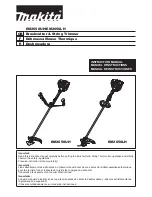
2-13
IM DLM3054-03EN
Measurement Preparation
1
2
3
4
5
6
App
Index
Setting the Probe Attenuation Ratio or the Voltage-Current
Conversion Factor
When using a probe not supported by the probe interface connectors, set the instrument's
attenuation ratio or voltage-current conversion factor to match the probe attenuation ratio or voltage-
current conversion factor. If the instrument's settings do not match the probe specifications, correct
measurement values will not be displayed.
Connecting a Probe Supported by the Probe Interface
Connectors
• If you connect a probe supported by the probe interface connector to the instrument, the probe type
is automatically recognized, and the attenuation ratio set.* Also because power is supplied to the
probe through the probe interface, it is not necessary to connect the probe power cable to the probe
power terminals.
• You can execute automatic zero adjustment on a current probe that is compatible with the probe
interface connector.
* For a list of compatible probes, see “Optional Accessories” on page vii.
Connecting an FET Probe, Current Probe, Differential Probe, or
Deskew Correction Signal Source
If you are using a YOKOGAWA FET probe, current probe, differential probe, or deskew correction
signal source, use one of the probe power terminals (option) on the instrument’s rear panel as the
power supply.* For details on the connection procedure, see the manual that came with the product
that you want to use.
* For a list of probe and signal source models, see “Optional Accessories” on page vii.
CAUTION
Do not use the probe power terminals (option) on the instrument’s rear panel for purposes
other than supplying power to an FET probe, current probe, differential probe, or deskew
correction signal source. Also, be sure that the total current of the four probe power terminals
and the four probe interface terminals does not exceed 1.2 A for ±12 V. Otherwise, the
instrument or a device connected to the probe power terminals may break.
French
ATTENTION
Ne pas utiliser les bornes d’alimentation de la sonde (en option) sur le panneau arrière de
l’instrument à des fins autres que l’alimentation d’une sonde FET, d’une sonde de courant, d’une
sonde différentielle ou d’une source du signal de correction du réalignement.
De même, s’assurer que le courant total des quatre bornes d’alimentation de la sonde et les
quatre bornes d’interface de la sonde ne dépasse pas 1,2 A pour ±12 V.
Sinon, l’instrument ou un appareil connecté aux bornes d’alimentation de la sonde pourraient
casser.
2.4 Connecting Probes
















































